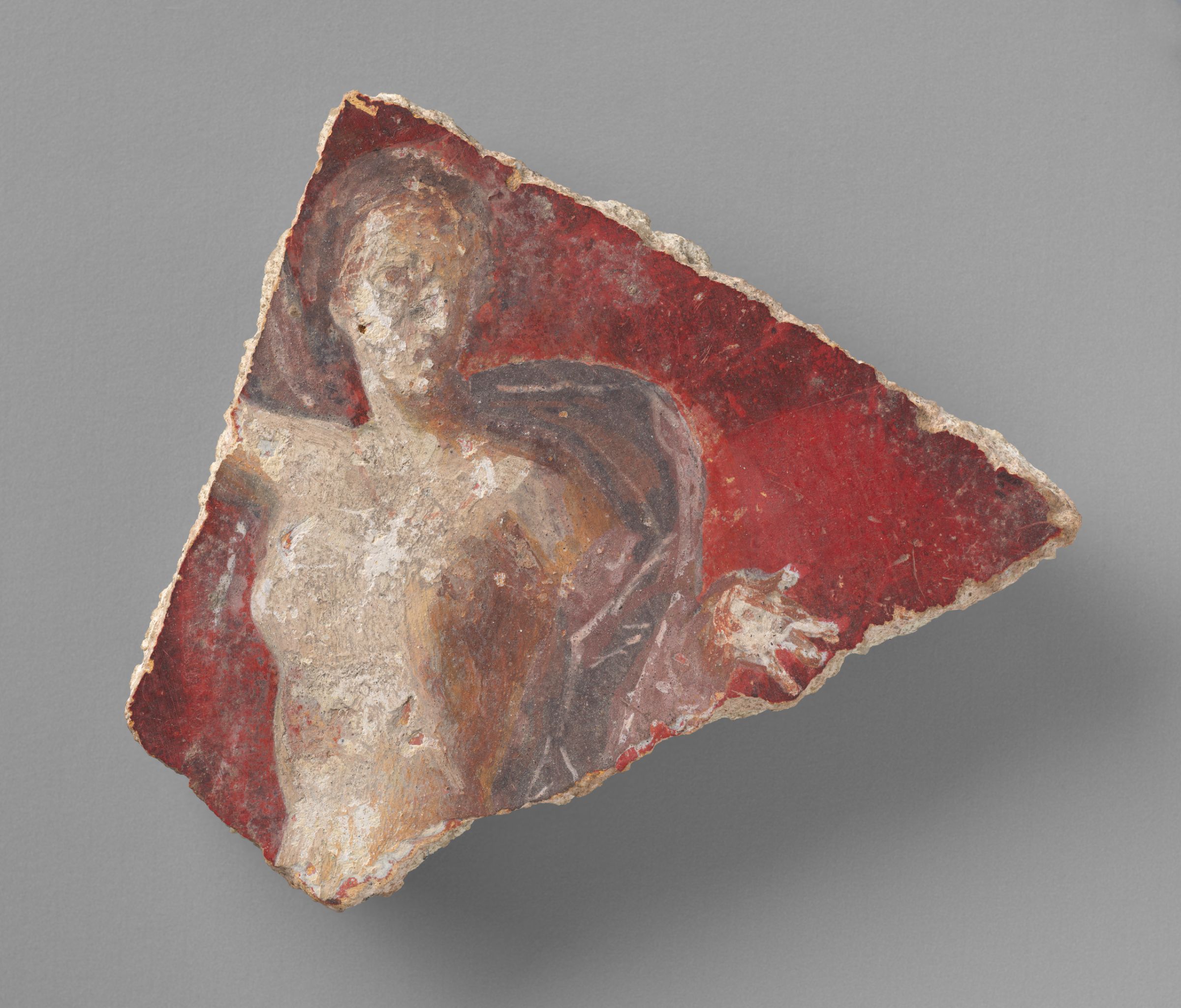2012.1.157: One-handled Flask with Decorative Appliqués
VesselsThis intact pear-shaped terracotta flask is reddish-orange colored. The mouth has a flat lip with a slight chip on the back edge. The body is tall and widens toward the bottom, where it narrows to a circular, straight-walled base. The body’s surface is smooth with two applied decorations, on the left a wheat spike and on the right a boy seen in profile. He has curly, short hair and holds a long indeterminate object. On the left side of the flask there is an ear-shaped handle with a rope design surface.
Identification and Creation
- Object Number
- 2012.1.157
- Title
- One-handled Flask with Decorative Appliqués
- Classification
- Vessels
- Work Type
- vessel
- Date
- 200-400 CE
- Places
- Creation Place: Ancient & Byzantine World, Africa
- Period
- Roman Imperial period, Late, to Early Byzantine
- Culture
- Roman
- Persistent Link
- https://hvrd.art/o/56974
Physical Descriptions
- Medium
- Terracotta
- Technique
- Redware
- Dimensions
- without handle: H. 14.1 x Dia. 7.7 cm (5 9/16 x 3 1/16 in.)
Provenance
- Recorded Ownership History
-
English collection (by 1980) sold; to [Jeffrey Spier, Ancient Coins and Antiquities, NY, 1980-1982], sold; to The Alice Corinne McDaniel Collection, Department of the Classics, Harvard University (1982-2012), transfer; to the Harvard Art Museums, 2012.
Acquisition and Rights
- Credit Line
- Harvard Art Museums/Arthur M. Sackler Museum, Transfer from the Alice Corinne McDaniel Collection, Department of the Classics, Harvard University
- Accession Year
- 2012
- Object Number
- 2012.1.157
- Division
- Asian and Mediterranean Art
- Contact
- am_asianmediterranean@harvard.edu
- Permissions
-
The Harvard Art Museums encourage the use of images found on this website for personal, noncommercial use, including educational and scholarly purposes. To request a higher resolution file of this image, please submit an online request.
Descriptions
- Description
-
Intact piriform one-handled red-slip flask with four appliqué decorations. The mouth is small, with the lip flaring out slightly and a small chip on the edge. The separately-attached vertical handle joins the body midway down and ends just above the base; the vessel sits on a small disc foot. The decoration consists of two ears of wheat, placed one on either side of the handle; a nude youth in profile, bending slightly, and holding something; and a male-female erotic scene.
Classification: J. W. Hayes, Late Roman Pottery (British School at Rome, 1972), form 171.39
- Commentary
-
Flasks were used for drinking or serving liquids. Typically, the body is bulbous and does not close and the vessel may have handles.The piriform (pear-shaped) flask seen here is a shape characteristic of African Red Slip Ware produced in Roman North Africa (1). The molded handle and decorative appliques would have been made independently and pressed onto the body of the vessel.
1. J.W. Hayes, Late Roman Pottery, (London: British School at Rome, 1972), form 171; compare to Yale 1913.547, in Lisa R. Brody and Gail Hoffman, eds., Roman in the Provinces: Art on the Periphery of Empire (Chestnut Hill, Mass.: McMullen Museum of Art, 2014), 331, no. 166, pl. 166.
Subjects and Contexts
- Roman Domestic Art
Related Digital Tours
Verification Level
This record has been reviewed by the curatorial staff but may be incomplete. Our records are frequently revised and enhanced. For more information please contact the Division of Asian and Mediterranean Art at am_asianmediterranean@harvard.edu
